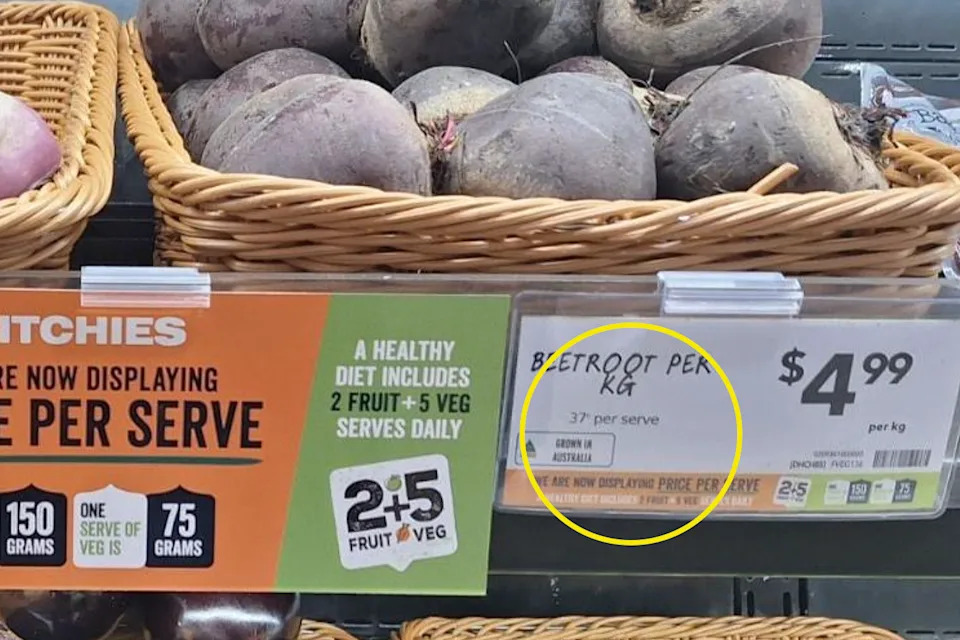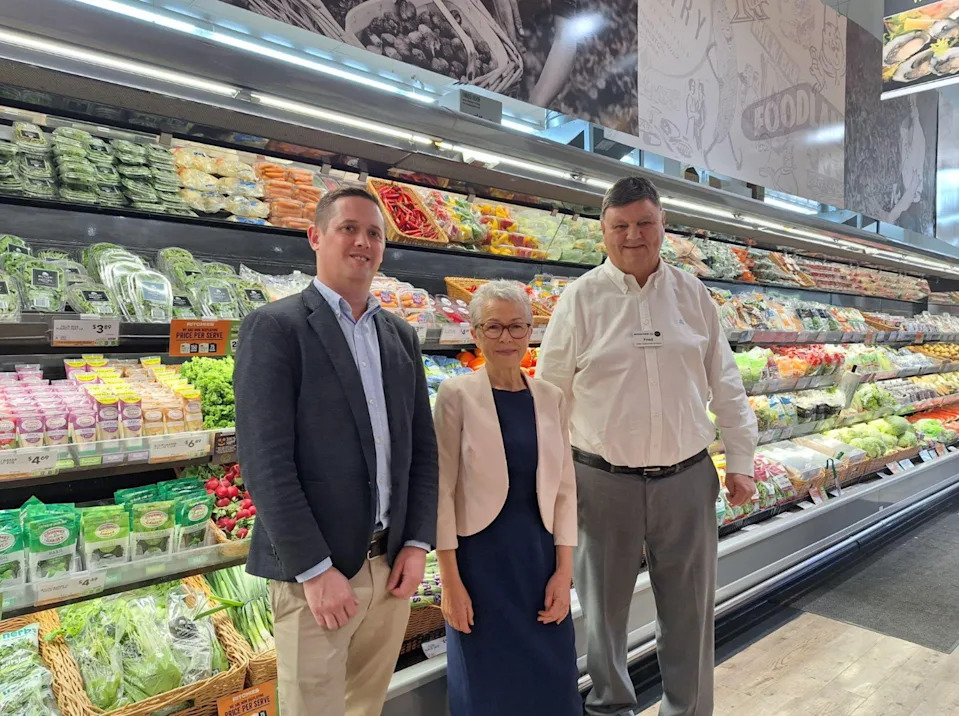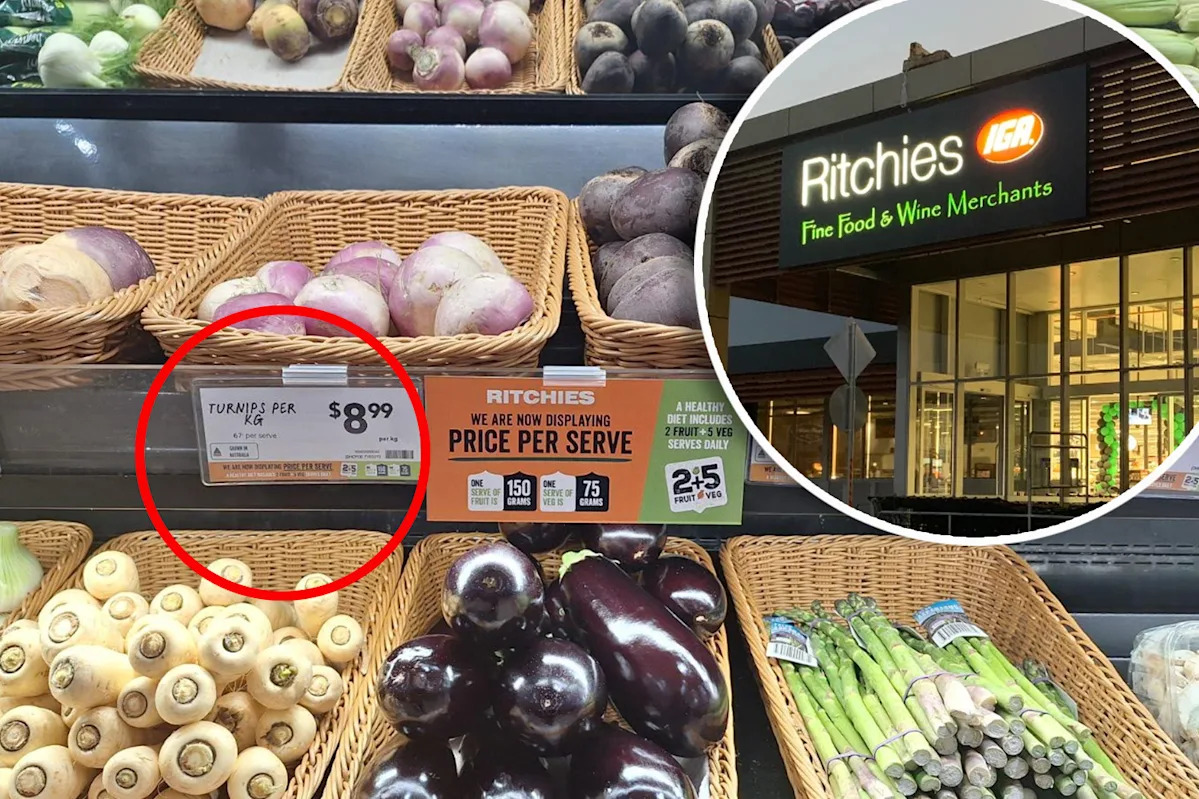A tiny change in supermarkets — a small label beside the veggie displays — is making a surprisingly big difference to wallets and waistlines. A landmark new study has found that a simple tweak to pricing tags is quietly reshaping how customers buy their greens.
And the impact could be massive; researchers believe it has the potential to save Australia $1.3 billion.
By switching to “nutritional serve pricing”, which shows the cost of a vegetable per recommended serve, shoppers are buying more produce and boosting their daily intake without even realising it.
That’s particularly beneficial because, according to the Bureau of Statistics, just 6.5 per cent of Australian adults met the recommended levels for vegetables, with obesity and diabetes rates at record highs across the country.
The data, collated by Monash University, analysed shopper habits across 56 IGA stores that displayed nutrition serve prices for over 850 days.
The research found that displaying prices per nutritional serve encouraged shoppers to buy an extra 60 grams of vegetables per day on average, while stores saw daily vegetable sales jump by 7.5 kilograms.
Monash’s consumer psychology expert, Fiona Newton, was the lead researcher on the project.
She spoke to Yahoo News and explained how the initiative, now backed by AUSVEG — the national peak body which represents the Australian vegetable industry — works.

Billions could be made across the country if Australians ate one extra piece of vegetable per day. Source: Supplied/Monash Uni
“Quite often, when you see this first sticker price for vegetables, you get a little shock,” she said.
“For example, you might see zucchinis at $7.99, a kilo, which looks a little steep, and that might put you off it. But what you’re doing is focusing on a bundled set of servings.
“So in each kilo of vegetables, there are actually more than 13, 75-gram servings that are nutritionally recommended for us.
“And so those six zucchinis at $7.99 will come down to just 60 cents per serve. The kilo price doesn’t give you that information.”
How can Australia benefit?
Professor Newton said that kilo prices remained in the stores studied. Additionally, by introducing serving prices, it broadened shoppers’ understanding of nutrition while also helping them to eat healthier.
The projected national benefits of the scheme, should it be more widely adopted, are $1.38 billion in healthcare cost savings, according to AUSVEG.
In addition, there stands to be a further $3.30 billion in supply chain benefits — from farmers to store owners — and 12,841 new jobs supported across production and retail.

AUSVEG CEO Michael Coote, Associate Professor Fiona Newton and Ritchies CEO Fred Harrison. Source: Supplied/Monash Uni
“That’s all the way from the grower up to the retailer,” Professor Newton said.
“That data suggests that 85 per cent of the net benefits of that 3.3 billion would go to growers and regional communities, and then we see the prediction of over 12,800 jobs across the supply chain, with many of those being around the production of veggies.
“So there are massive benefits.”
Research co-author Professor Josh Newton said the partnership with Ritchies IGA provided a rare opportunity to observe real consumer behaviour in a genuine retail environment.
“The gains we observed occurred without any promotional activity, which highlights how powerful clear price communication can be,” he said.
Can nutritional serve labelling help with budgeting?
Importantly, Professor Newtown believes the idea could also help families budget better.
She explained that for families, especially, nutritional serve pricing gives a clearer sense of the value of vegetables.
It allows shoppers to quickly see which vegetables fit their budget, making it easier to mix and match items, doubling up on carrots, adding zucchini or potatoes, for example, while keeping costs manageable.
She added that with meat being relatively expensive, seeing that a single serve of vegetables can cost as little as 22 cents, provides a clear incentive to bulk out meals with more vegetables.
“I could add a little bit more into that lasagna or into that spaghetti sauce,” she said.
The new approach is now being rolled out across Ritchies IGA stores.
“And then from there, this is a very big problem,” Professor Newtown said.
“We need everybody on board.
“The more retailers that take this on, the more shoppers that are going to see nutritional serve pricing and be able to use that to help them meet their five to six servings of vegetables a day.”
Do you have a story tip? Email: newsroomau@yahoonews.com.
You can also follow us on Facebook, Instagram, TikTok, Twitter and YouTube.


